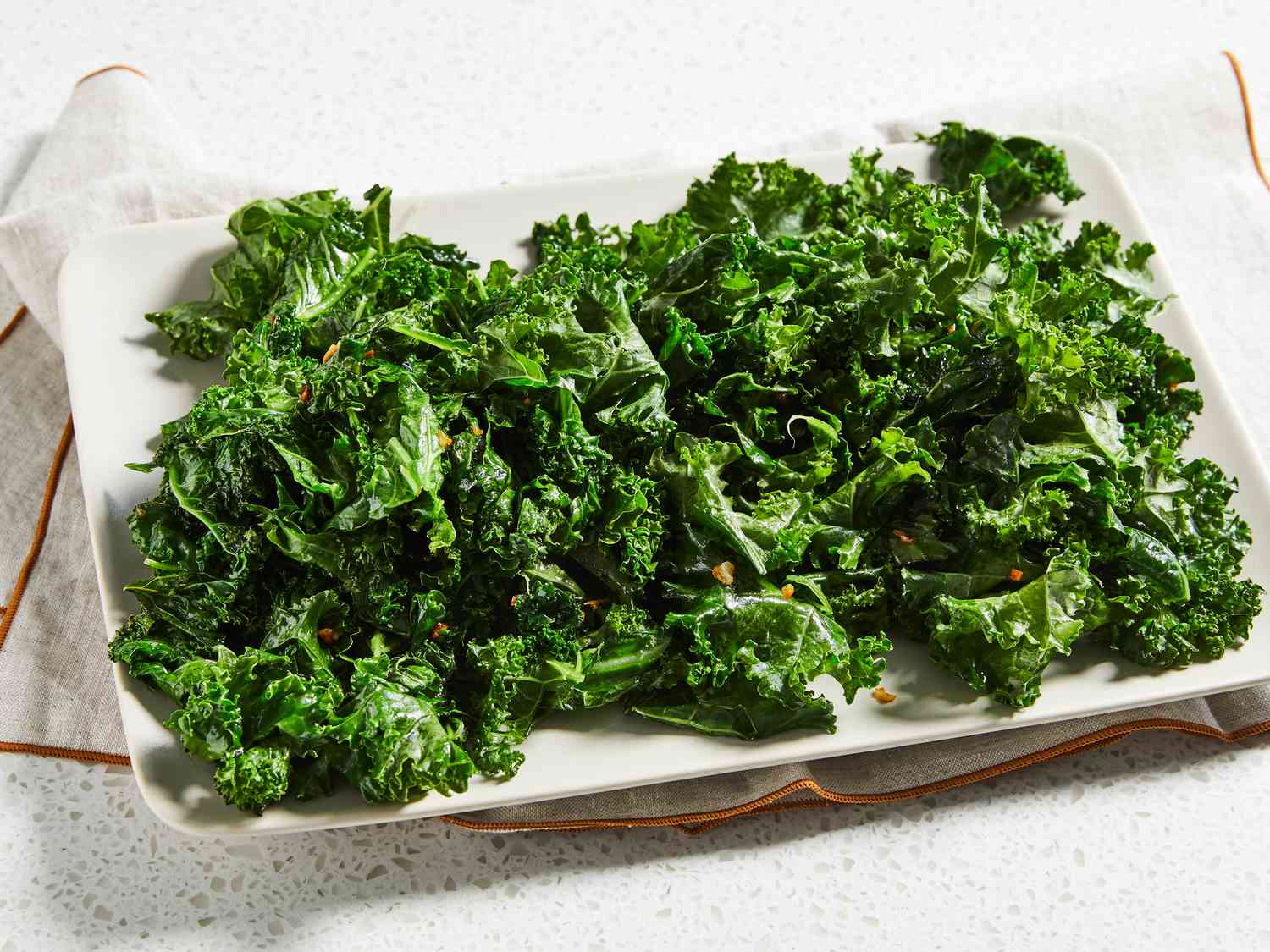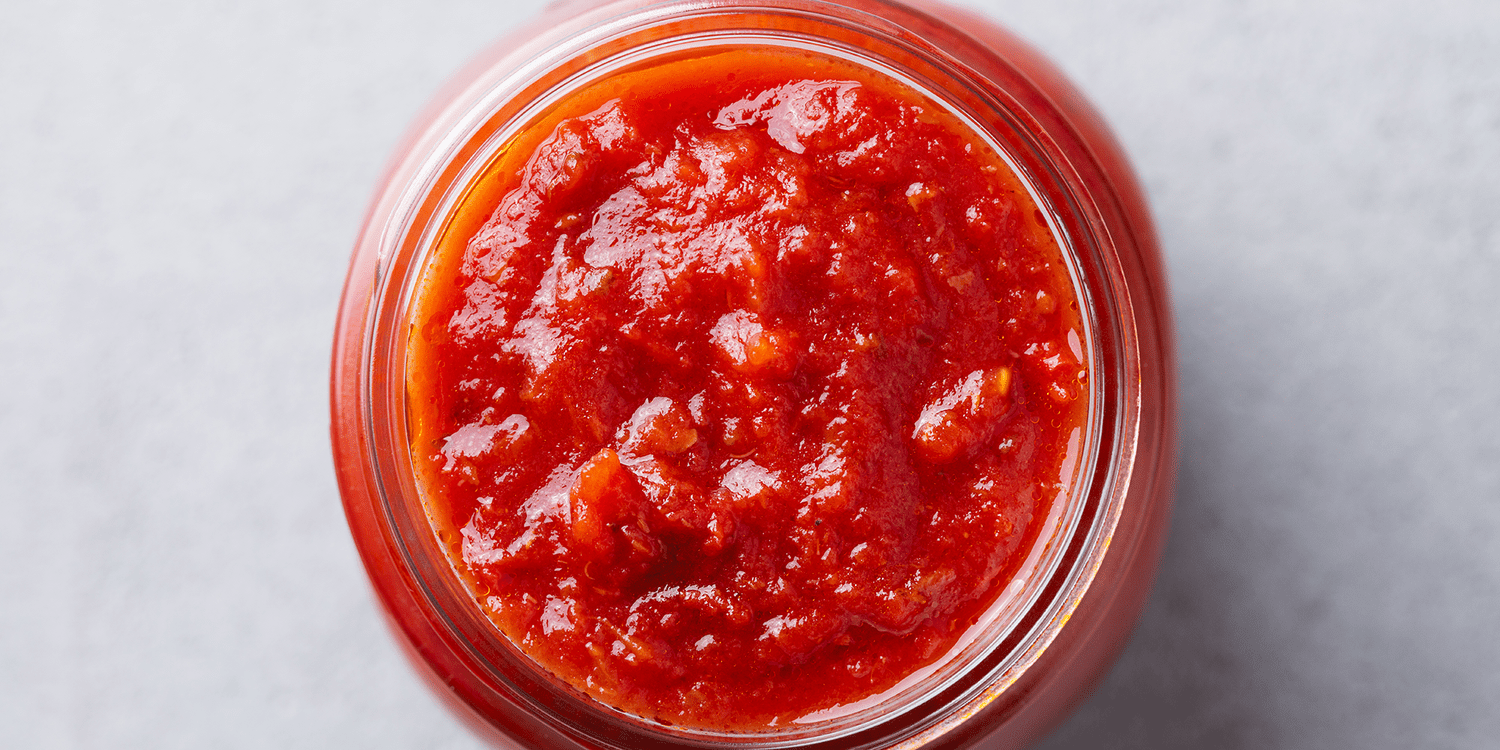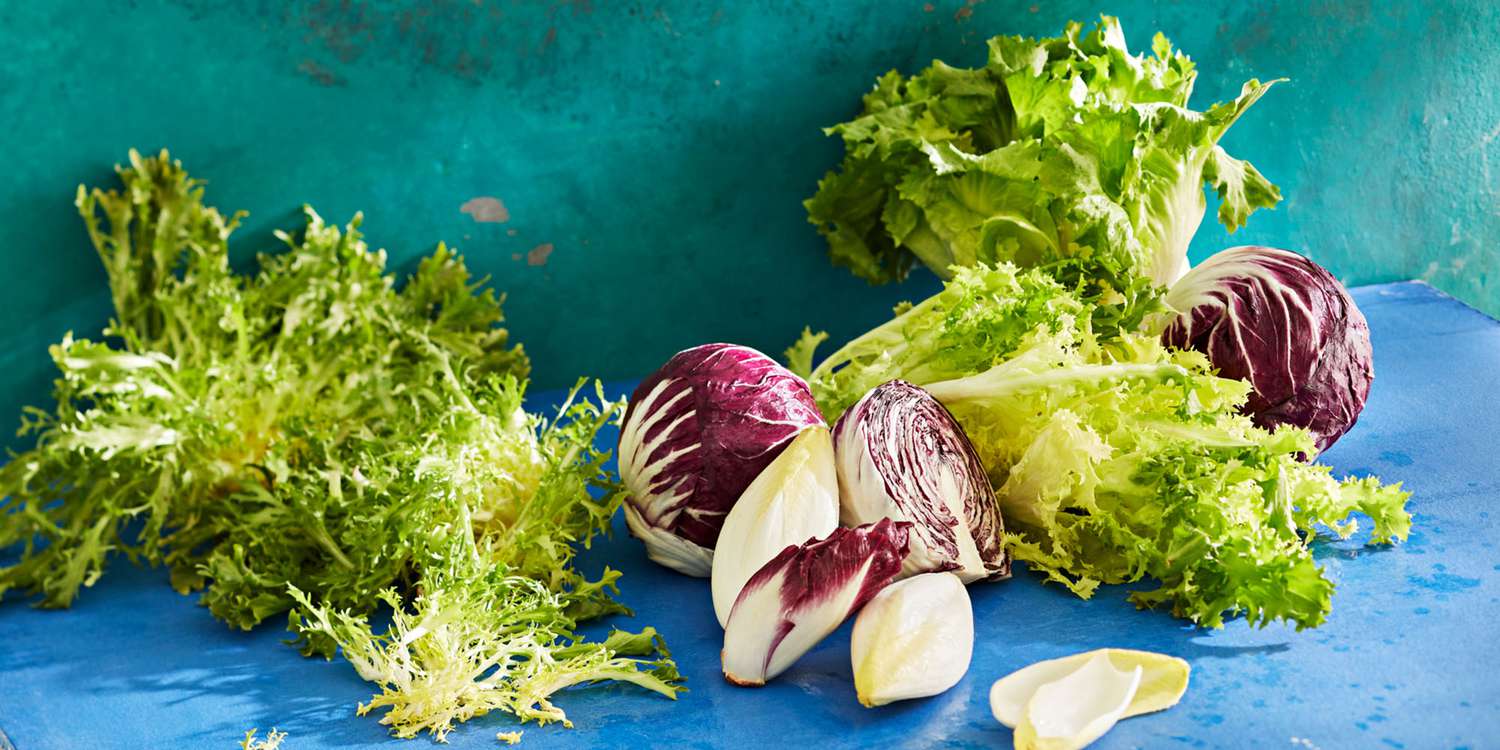In recent years, kale has undoubtedly stolen the spotlight from leafy greens like spinach, lettuce, and cabbage. Its slew of nutritional attributes and anti-inflammatory properties have influenced many to embrace the leafy green vegetable. Home cooks can harness the potential health benefits by eating kale raw in a salad, adding it to soups and stews, and trying it sauteed or baked as veggie chips.
While you typically see green kale with curly leaves in the produce section, there is actually more than one variety of kale on the market. And you may be surprised to find out that the leafy veggies you’ve previously walked right past are types of kale at all, because they don’t necessarily resemble the curly kale many are used to. Read on to discover the four most common types of kale, their names, characteristics, and how to use and store them.
What Is Kale?
Kale is a leafy vegetable from the Brassica family that is botanically closely related to cabbage. It is undoubtedly a low-carb, fiber-containing veggie; it is also a nutrient powerhouse providing an excellent source of vitamin K, an essential nutrient for blood clotting and healthy bones; vitamin C, a powerful antioxidant for strengthening the immune system; and a source of vitamin A to support healthy vision and more.
Kale contains isothiocyanates, the naturally occurring compounds found in cruciferous vegetables that give them a bitter flavor. The bitterness level varies between varieties. Nonetheless, these compounds, along with other phytonutrients like beta carotene, lutein and zeaxanthin, to name a few, may help protect one against chronic diseases like cancer.
While you may have seen a wide array of kale on the market, there are four main types of edible kale.
Types of Kale

Getty Images
Curly Kale
Curly kale is the standard variety that you see at the greengrocer and supermarkets. Curly kale could also be referred to as Winterbor kale, Scottish kale, Blue Curled Scotch kale, Redbor kale, and Scarlet kale.
This type of kale has oblong or obovate-shaped leaves with white veins; the fleshy,waxy leaves are attached to long, sturdy, and fibrous stems.
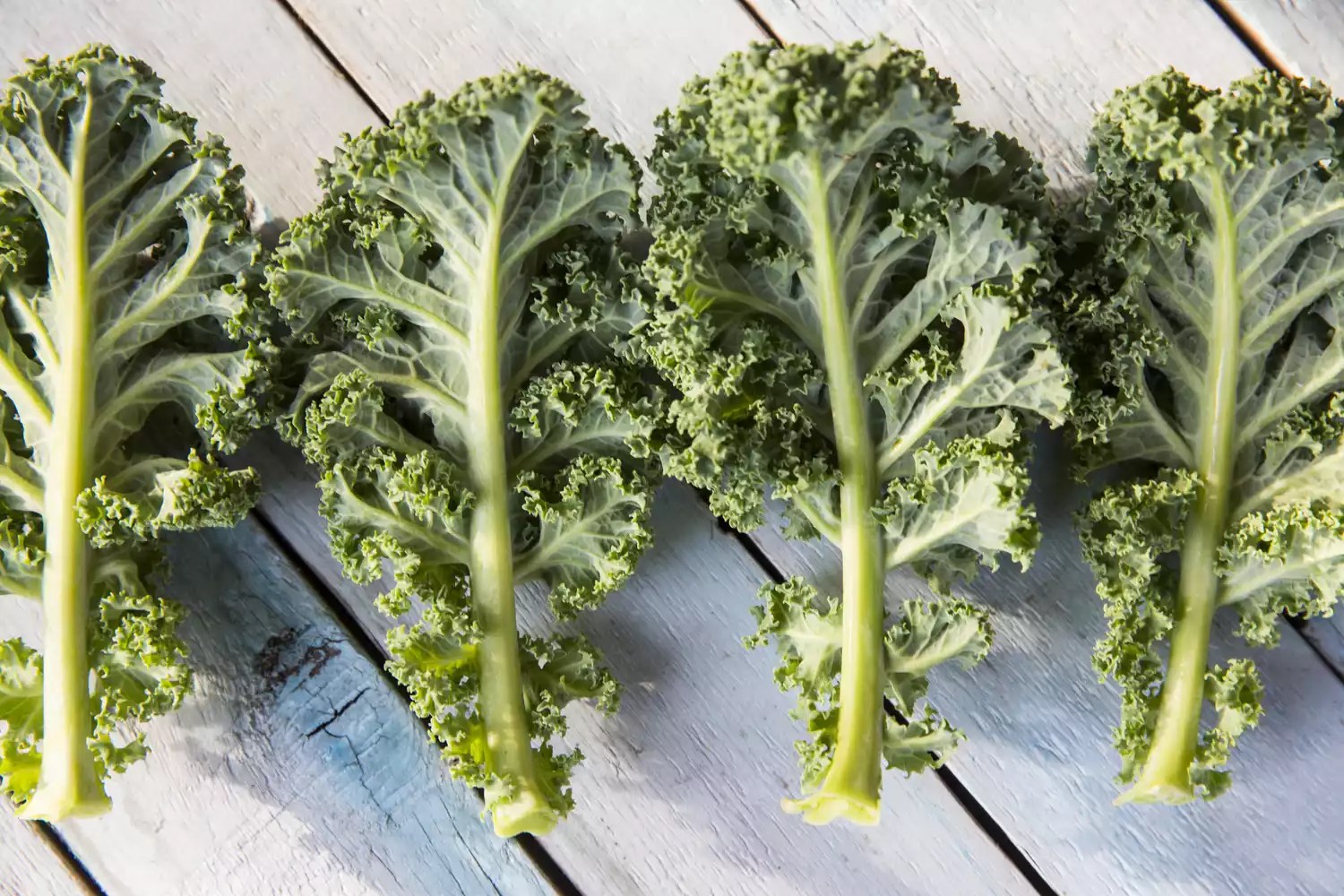
RUSS ROHDE/Getty Images
Curly kale offers a rich, hearty, and woody flavor that adds an earthy tone when consumed raw in salads and smoothies. You can also enjoy this leafy veggie cooked — even steamed, boiled, or microwaved. Get creative by baking or air-frying the leaves to become crispy kale chips, or add them as an ingredient in soups.
Italian Kale
The Italian kale is a relative of curly kale, except that they belong to two different varieties — curly kale belongs to the sabellica variety while the Italian is a part of the palmifolia variety.
Like the curly cousin, Italian kale has multiple names — dinosaur kale, Toscano kale, Tuscan kale, Lacinato kale, Cavolo nero, black Tuscan kale, and palm kale.
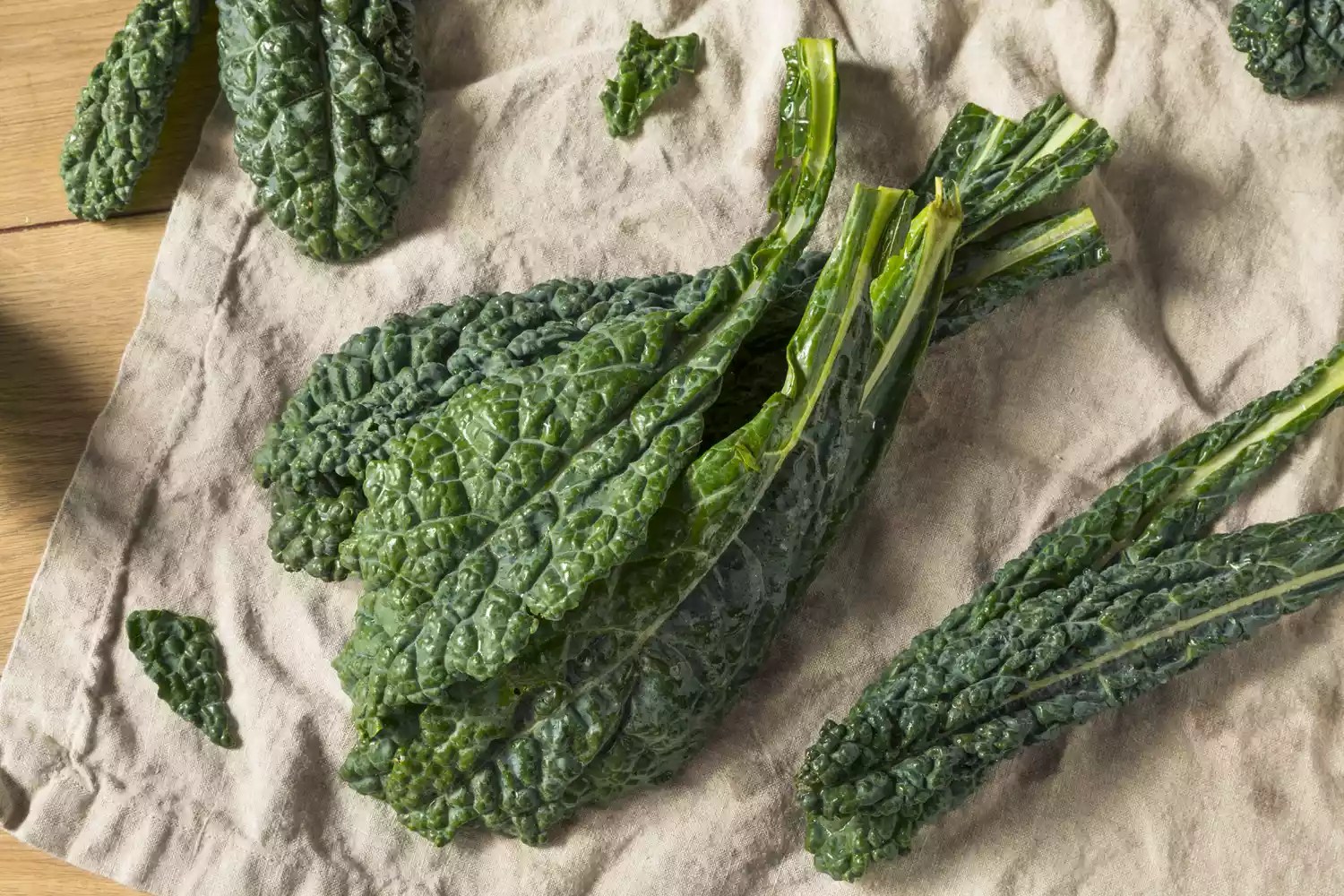
bhofack2/Getty Images
You will notice that Italian kale is a different type of kale when placed side-by-side with the curly variety — its leaves are not curly but are rather flat, bumpy and narrowly shaped with a dark green to deep blue-green hue.
While the stems are just as woody and fibrous, the Italian kale leaves are milder and sweeter in flavor. They are an excellent green for salads but are also suitable for stir-frying and soups. These kale leaves also work exceptionally well with pastas and grains, like in this Red Quinoa and Tuscan Kale recipe.
Chinese Kale
You will find Chinese kale, also known as Chinese broccoli (pronounced as Gai lan in Cantonese and Jiè lán in Mandarin) in Asian grocery stores. Depending on where you live, you may also see it available in mainstream supermarkets.
The Chinese broccoli leaves can carry a pale green to dark green hue, varying a bit between varieties. But, all types have soft leaves that can be smooth or wrinkled.
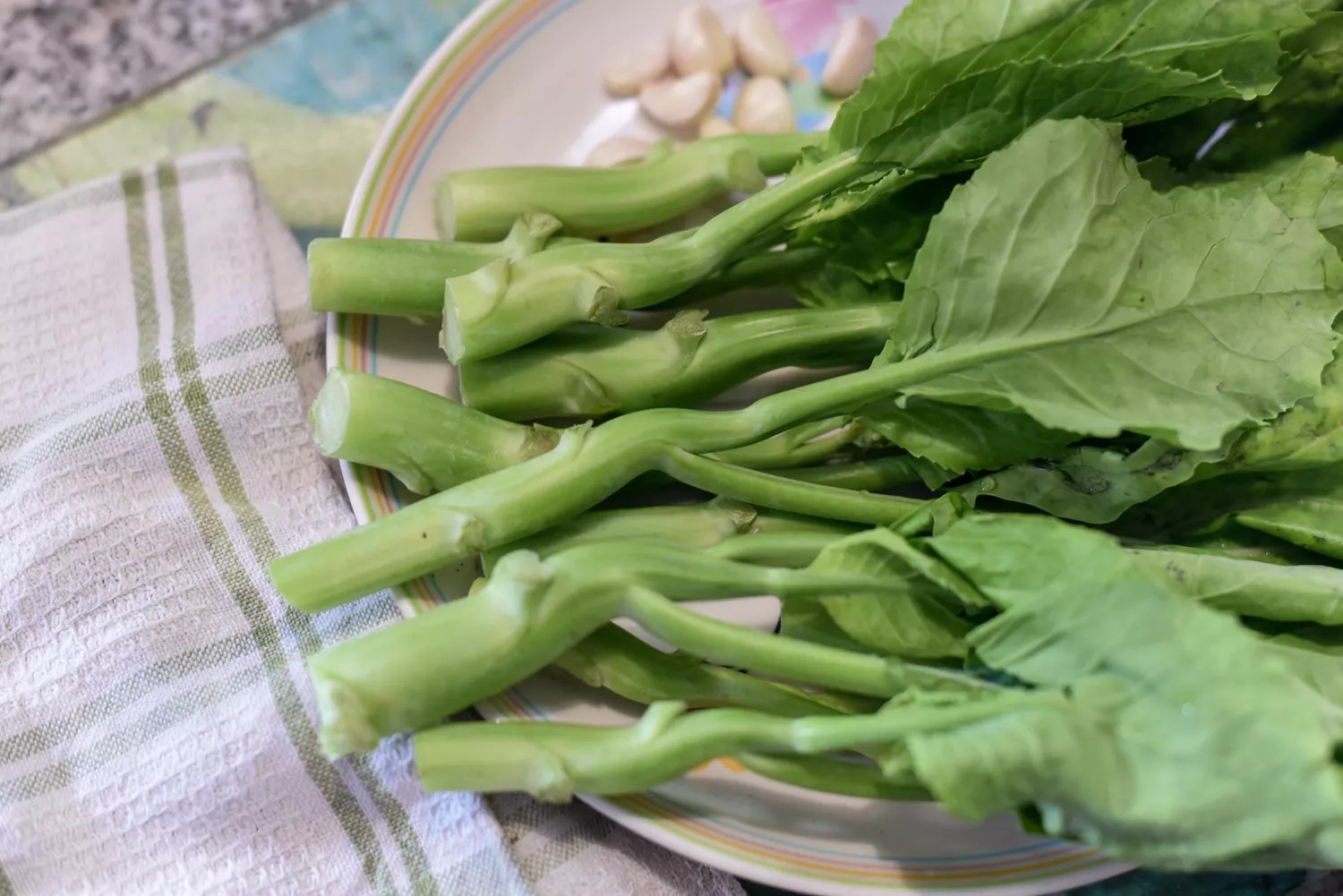
pixbox77/Getty Images
There is a reason why it is called Chinese broccoli — its taste and texture closely resemble the common broccoli. The stalks are thicker and crunchier, and offer a milder and sweeter flavor than other varieties of edible kale.
The “baby” or younger variation is exceptionally tasty with its thinner, softer, crunchier stems. Older Chinese kale has wider and larger stalks that tend to be more fibrous with bitterer leaves. Unlike other kale varieties, Chinese kale is best enjoyed cooked — boiled, steamed, sauteed, or stir-fried.
Russian Kale
Russian kale, also known as Siberian kale and Ragged Jack kale, shares the same species as rapeseed and canola. You can find these leaves as Red Russian and White Russian — the red variety has flat blue-greenish leaves with red to purple-hued stems, while the white has brighter green, ruffle-edged leaves with white veins and stems.
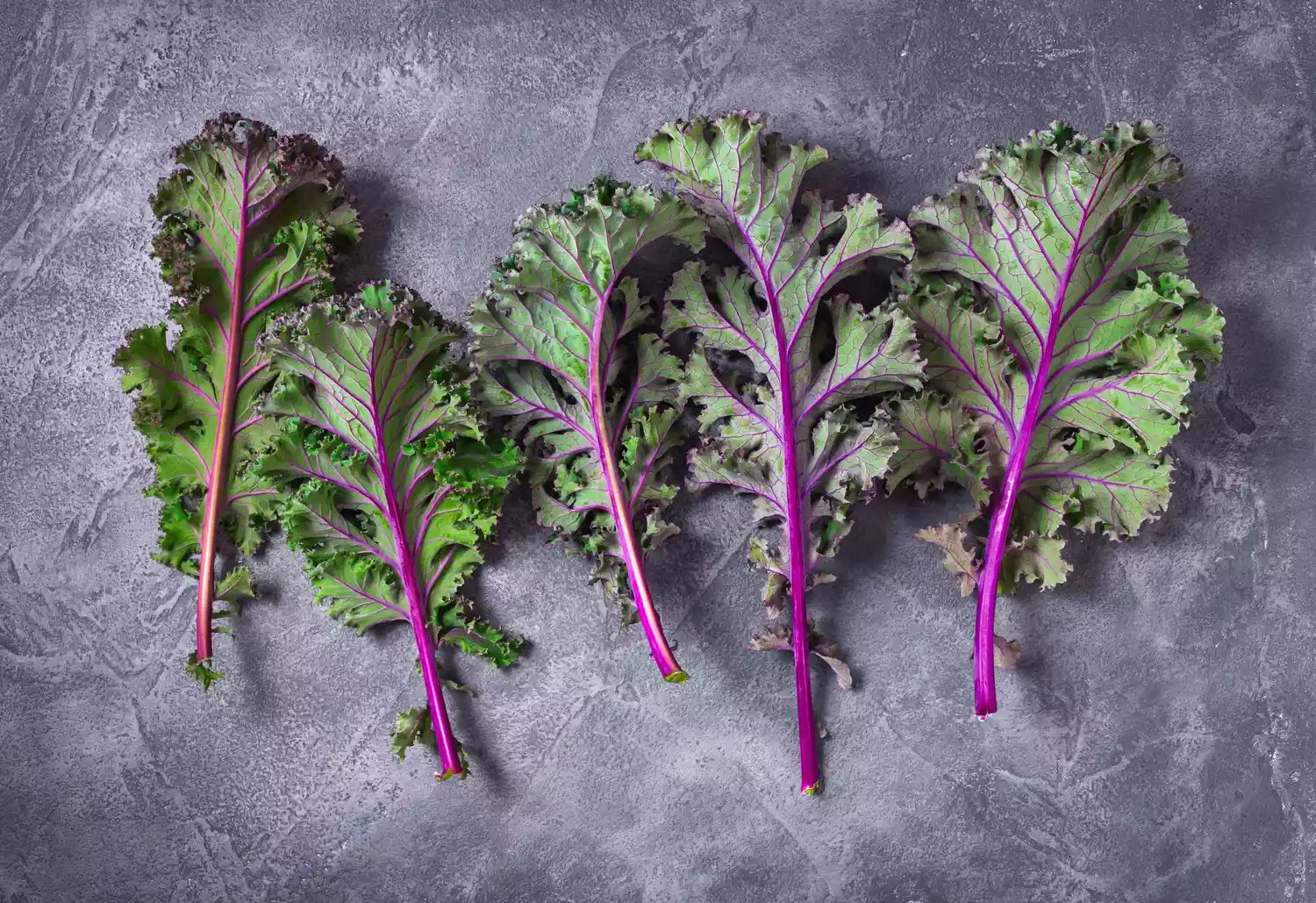
Yingko/Getty Images
Compared to other kale varieties, Russian kales are on the tenderer, milder, and sweeter side, making them an excellent and delicious green for salads and soups.
How to Store Kale
Kale’s shelf-life ultimately depends on how you store it. The USDA Foodkeepr App suggests fresh kale lasts 3 to 5 days in the fridge and up to 8 to 12 months in the freezer from the date of purchase. Be sure to check out our kale storage guide to keep whatever variety of kale you purchase fresh and crisp for as long as possible.

